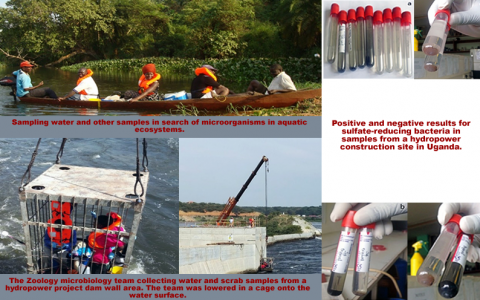Microbiology at Zoology

The department is at the helm of teaching, knowledge development and championing in outreach services to communities and agencies nationally, regionally and internationally. Some of the key areas covered include use of microorganisms in water quality management, quality assurance and management in fish (and food) industry, evaluation and management of ecosystem services using microorganisms, for example, wetlands, rivers and lakes, including other coastal marine systems. The role of microorganisms in nutrient cycling (‘web of life’), such as, nitrogen cycles and biodegradation of wastes. The department is championing search for presence and solution to microbiologically influenced corrosion (MIC) of concrete and steel in hydroelectric power stations, such as, Karuma and Bujagali Hydropower projects. We are highly experienced in phytoplanktons and zooplanktons, microbenthos and macro benthos research (as bio-indicators) as regards to their use in predicting the status and integrity of aquatic systems.
